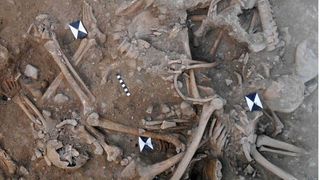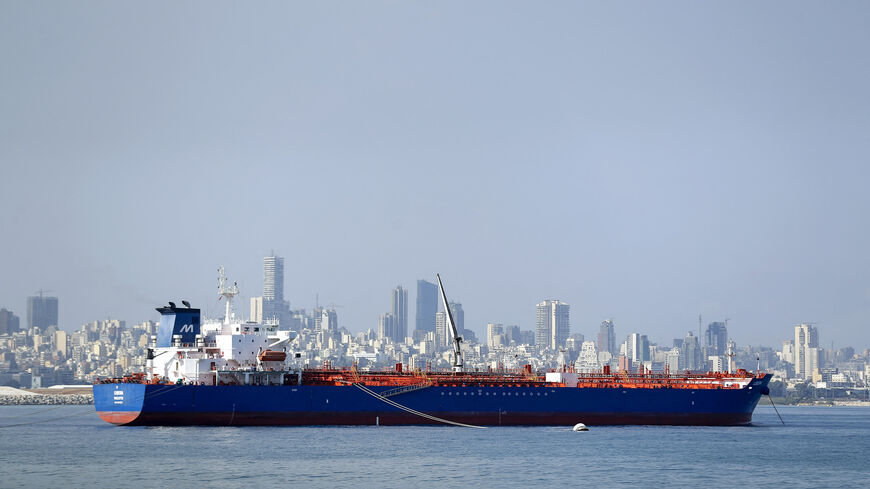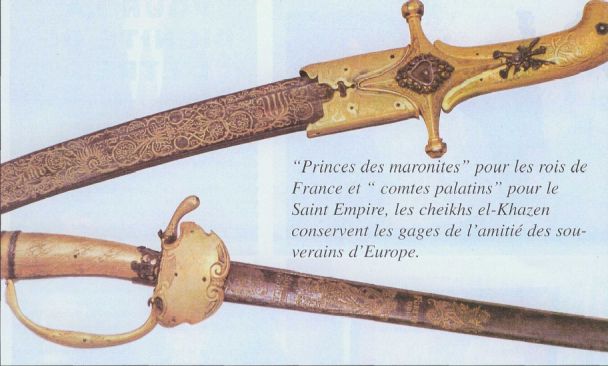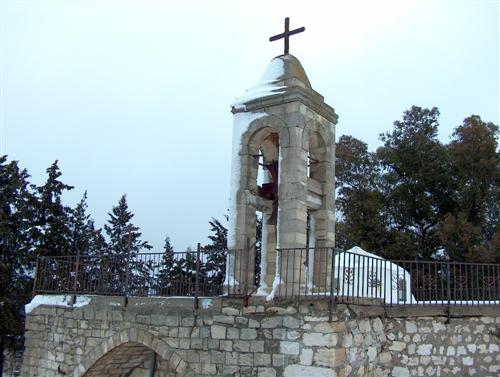يلتبس على اللبنانيين موضوع النفط الايراني المستورد بين التصريح الايراني ان تجار من لبنان اشتروه وبين الشكر الموجه لحكومة الجمهورية الاسلامية من …

By Ben Turner - livescience.com -- Archaeologists digging near a Middle Eastern castle have unearthed two mass graves containing the grisly remains of Christian soldiers vanquished during the medieval Crusades — and some of them could have even been personally buried by a king. The chipped and charred bones of at least 25 young men and teenage boys were found inside the dry moat of the ruins of St. Louis Castle in Sidon, Lebanon. Radiocarbon dating suggests they were among the many Europeans who, between the 11th and the 13th centuries, were spurred by priests and rulers to take up arms in a doomed effort to reconquer the Holy Land. Much like many who came to fight and plunder before them, the soldiers’ long and arduous journeys ended with their deaths — all as a result of wounds they received in battle. But despite the widespread casualties, mass graves from this bloody period of history are incredibly difficult to find. "When we found so many weapon injuries on the bones as we excavated them, I knew we had made a special discovery," Richard Mikulski, an archeologist at Bournemouth University in the U.K., who excavated and analyzed the remains, said in a statement.
The archaeologists analyzed DNA alongside naturally occurring radioactive isotopes in the men’s teeth to confirm that some were born in Europe, and an analysis of different versions, or isotopes, of carbon in their bones suggests that they died sometime during the 13th century. Crusaders first captured St. Louis Castle just after the First Crusade in 1110. The invaders held onto Sidon, a key strategic port, for more than a century, but historical records show that the castle fell after it was attacked and destroyed twice — at first partially by the Mamluks in 1253 and later by the Mongols in 1260.
The researchers said it is "highly likely" that the soldiers perished during one of these battles, and by brutal means: The bones all bear stab and slice wounds from swords and axes, as well as evidence of blunt-force trauma. The soldiers had more wounds on their backs than on their fronts, suggesting that many were attacked from behind, possibly as they fled during a rout, and the distribution of these blows implies that their attackers charged them down on horseback. A number of the men’s remains also have blade wounds to the back of their necks — a sign that they may have been captured alive before being beheaded. "One individual sustained so many wounds (a minimum of 12 injuries involving a minimum of 16 skeletal elements) that it may represent an incident of overkill, where considerably more violent blows were applied than was actually required to overcome or kill them," the researchers wrote in their study.

By Hanan Hamdan -- almonitor.com -- BEIRUT — A convoy of 80 trucks, each carrying 50,000 liters (roughly 13,210 gallons) of Iranian fuel, entered the Bekaa Valley region in eastern Lebanon from Syria on Sept. 16, Hezbollah media official in the Bekaa Valley Ahmed Raya told Al-Monitor. “The first Iranian tanker that docked in Syria and is being transported to Lebanon holds about 50 million liters of fuel, requiring about 1,000 tankers to be transported to Lebanon. This will be done over the course of seven days, when the second ship will have arrived after taking the same unloading and transporting route,” he said. “As soon as the tankers arrived [in Lebanon], Al-Amana fuel company launched preparations to begin distributing diesel within two days to all Lebanese regions, according to the mechanism announced by Hezbollah Secretary-General Hassan Nasrallah,” Raya said.
At the Ashura commemoration Aug. 19, Nasrallah had announced that an Iranian ship loaded with fuel was set to sail from Iran as the country faces a worsening fuel crisis. In a televised speech Sept. 13, Nasrallah announced the arrival of the first Iranian oil ship, destined for Lebanon, to Baniyas port in Syria on Sept. 12, to be followed by three other ships. He said that the cargo was unloaded in Syria so as not to embarrass the Lebanese state and that the Syrian leadership welcomed the ship, stored its cargo in Baniyas and secured a number of tankers to transport it to Lebanon. Asked about the details of the cargo, Raya said, “It will not be distributed to a specific category of Lebanese. The first part will be donated to government hospitals, retirement homes, orphanages, special needs centers, water institutions, poor municipalities, the Civil Defense and the Lebanese Red Cross.”
by english.alaraby.co.uk — Lebanese authorities seized 20 tons of ammonium nitrate in an eastern region overnight on Saturday, local media reported. The …
Khazen History


Historical Feature:
Churches and Monasteries of the Khazen family

St. Anthony of Padua Church in Ballouneh
Mar Abda Church in Bakaatit Kanaan
Saint Michael Church in Bkaatouta
Saint Therese Church in Qolayaat
Saint Simeon Stylites (مار سمعان العامودي) Church In Ajaltoun
Virgin Mary Church (سيدة المعونات) in Sheilé
Assumption of Mary Church in Ballouneh
1 - The sword of the Maronite Prince
2 - LES KHAZEN CONSULS DE FRANCE
3 - LES MARONITES & LES KHAZEN
4 - LES MAAN & LES KHAZEN
5 - ORIGINE DE LA FAMILLE
Population Movements to Keserwan - The Khazens and The Maans
ما جاء عن الثورة في المقاطعة الكسروانية
ثورة أهالي كسروان على المشايخ الخوازنة وأسبابها
Origins of the "Prince of Maronite" Title
Growing diversity: the Khazin sheiks and the clergy in the first decades of the 18th century
Historical Members:
Barbar Beik El Khazen [English]
Patriach Toubia Kaiss El Khazen(Biography & Life Part1 Part2) (Arabic)
Patriach Youssef Dargham El Khazen (Cont'd)
Cheikh Bishara Jafal El Khazen
Patriarch Youssef Raji El Khazen
The Martyrs Cheikh Philippe & Cheikh Farid El Khazen
Cheikh Nawfal El Khazen (Consul De France)
Cheikh Hossun El Khazen (Consul De France)
Cheikh Abou-Nawfal El Khazen (Consul De France)
Cheikh Francis Abee Nader & his son Yousef
Cheikh Abou-Kanso El Khazen (Consul De France)
Cheikh Abou Nader El Khazen
Cheikh Chafic El Khazen
Cheikh Keserwan El Khazen
Cheikh Serhal El Khazen [English]
Cheikh Rafiq El Khazen [English]
Cheikh Hanna El Khazen
Cheikha Arzi El Khazen
Marie El Khazen